The Difference Between Functional And Non-functional Requirements

Head of Analytics & Design Department
Reading time: 10 min
In software development, requirement analysis and engineering play a major role in planning and projecting future software functionality. One can think of requirements as an outline of features for building an MVP. Properly described requirements will come in handy in a project brief and provide an understanding of what a system will do and how the processes should work in a finished product.
This article will be useful if you want to learn about functional and non-functional requirements. Examples of such requirements and their importance in software development will also be discussed.
What are requirements in IT
Requirements are a set of detailed criteria that a product must meet to satisfy the needs of both the business and the target audience it was made for. They serve to establish an understanding between software developers and contractors in terms of vital software functionality. Project managers and business analysts perform requirements analysis as a part of analytics for software development to determine the needs and conditions to be met, the risks and deadlines, to set a goal and create project documentation.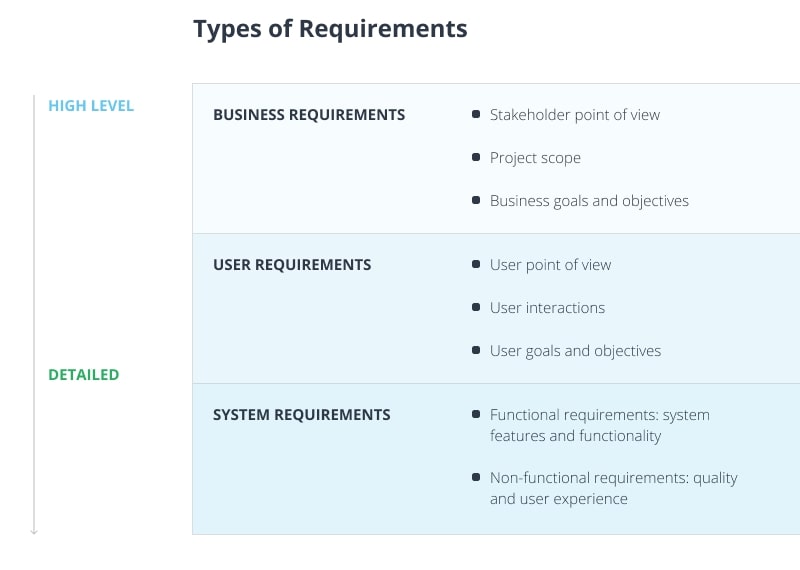 Overall, requirements can be divided into the following types:
Overall, requirements can be divided into the following types:
- Business requirements characterize vital activities making the software applicable to the business. These are determined by customers’ views, needs and expectations for the project. For example, in a web application we created for a real estate agency, the business requirements were a large real estate database and personalized user experience.
- User requirements attend to the user’s future actions within the system. Users’ needs, expected activities, and their outcomes are layed out here. For our photographers and models social app, the user requirements would be the ability to find and communicate with chosen professionals.
- System requirements stem from the functionality and features of an upcoming system. They describe what a system must do as well as services provided by the software and the boundaries of the system. This is where functional and non-functional requirements are defined.
Business requirements are commonly mistaken for functional requirements and vice-versa. This is wrong because these types of requirements answer to completely different goals. Business requirements characterize business goals in a broad sense, while functional requirements are more precise and describe the capacities of software.
Functional requirements
Project functional requirements serve as a basis for the software. They are a set of tasks for the developers to implement into the product. Clearly defined functional requirements put the development team and the contractor on the same page and help to move the process into the direction the contractor expects. They’re usually an amalgamation of functionality required to achieve business goals and users’ expectations for the software.
What are functional requirements
Let’s start by defining functional requirements. Functional requirements are describing what the software will do, including a description of the technical foundation of the system and its working processes. Functional requirements depend on the system types and users’ needs; they identify the system properties.
There are many ways to describe a project’s functional requirements:
- as user requirements — systems are presented in general terms with little to no specification;
- as system requirements — include an extensive overview of the system, describing system inputs and outputs, exceptions, etc.;
- via use cases — scenarios of user interaction with the software.
The specification of functional requirements should be consistent and complex. The requirements’ consistency means that incompatible and mutually exclusive services should not be implemented into a shared system. The requirements’ consistency ensures that every service is described thoroughly.
While writing project functional requirements, you may find these tips useful:
- Define expected functionality precisely and in detail. More accurate requirements will lead to clearer timelines and better budgeting by the development team.
- Describe the processes from beginning to end. Lacking descriptions will lead to developers misinterpreting your view on how the software should work. Delineating the processes meticulously will resolve probable misunderstandings before they arise.
- Try to keep your specifications mathematically precise and comprehensible to the developers. This will ease the development process as the team wouldn’t lose time translating your specifications into technical language.
Examples of functional requirements
Let’s take a look at the examples of functional requirements through an authentic User Story. These are the requirements that involve functionality of the system.
Non-functional requirements
The importance of non-functional requirements is wrongfully thought to be minor compared to functional requirements. While the system will fall apart without functional requirements, lack of non-functional won’t affect the project this much. However, the non-functional requirements play a significant role in software development — they allow you to provide a higher quality user experience.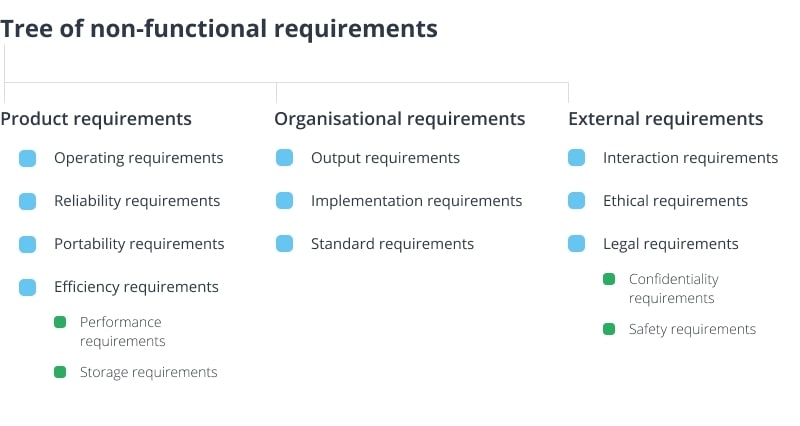 What are non-functional requirements
What are non-functional requirements
Non-functional requirements (NFRS) describe how the system will work. They allow you to account for and implement a degree of quality into the features rather than the features themselves. Most of the non-functional requirements are split into three groups:
- Product requirements. Performance, required operating and storage memory, reliability, system portability, and usability.
- Organizational requirements. Software development standards, programming languages, design methods, output requirements, and related documentation,
- External requirements. Legislation, ethical requirements (proper storage of personal data), and accessibility to the user.
Inside the groups, there are many NFRS, most of them are specific to every business. However, let’s define a list of common non-functional requirements:
- Usability. Users should be able to interact with the software easily and in an expected way. This means that the purpose and functionality of the product should be simple and intuitive from the first launch. All the necessary features should be in place, no disturbance or distraction should be on a user’s way to their goal.
- Security. Includes legal compliances, licenses, and client protection, especially in terms of the client’s personal data. Software for distribution must abide by the local law and be approved by the government.
- Reliability. Predicts possible vulnerabilities and problems that can occur in your software as well as a way to solve them. This also includes typical issues of a programming language you will decide to code your software with, issues with the technologies used in the development, and probable customer complaints as well as channels to communicate with them.
- Performance. These requirements answer for the speed of software reaction to a user’s interaction with it. The key to good performance is to keep everything simple: the code must be comprehensive and optimized, the steps that user takes to achieve the goal must be as few as possible, and the updates should add to the performance, not slow it down.
Basically, non-functional requirements put the meat on a skeleton made from functional requirements. It is no less important to keep non-functional requirements as clear as functional, otherwise the misinterpretations will ruin web design and the project’s quality overall.
Examples of non-functional requirements
The following is a more practical list of common non-functional requirements examples:
- The web page should load in no more than two seconds;
- The confirmation email should be sent within five minutes;
- The news portal should be able to handle a flood of users in the morning;
- The banking app is expected to be available 24/7.
Functional vs Non-Functional Requirements
To sum up, the difference between functional vs non-functional requirements is quite simple: functional requirements provide features while non-functional requirements describe the quality for said features. Both types of requirements are equally important: without functional requirements the software won’t work and without non-functional requirements, nobody would want to use the software. Functional and non-functional requirements are intertwined in terms of creating a clear outline of the product.
Conclusion
Functional and non-functional requirements are as important as the precise and accurate documentation describing them. If you are considering defining functional and non-functional requirements for your project, contact us at info@azoft.com. Our software consulting services would love to help you with project analytics to provide vital and quality functionality.
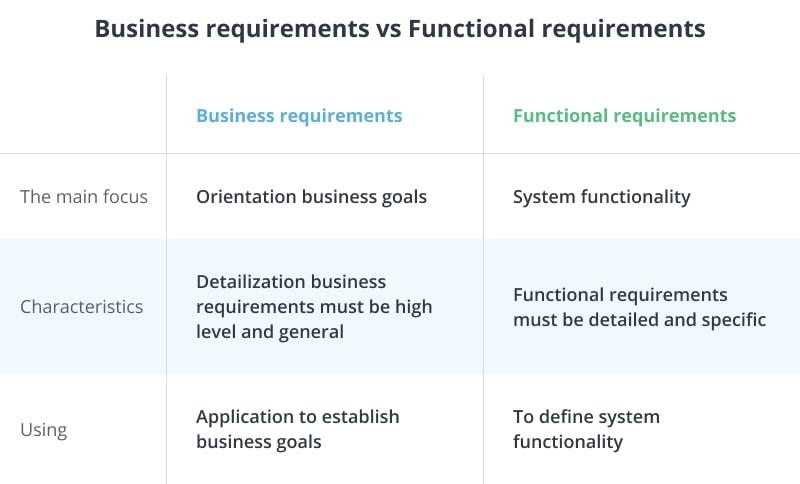
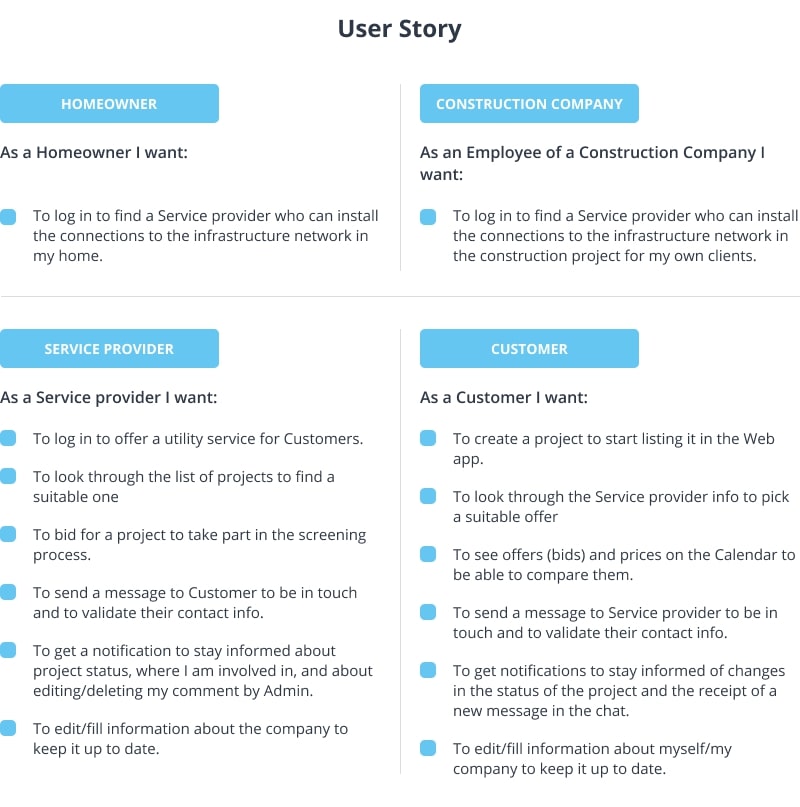
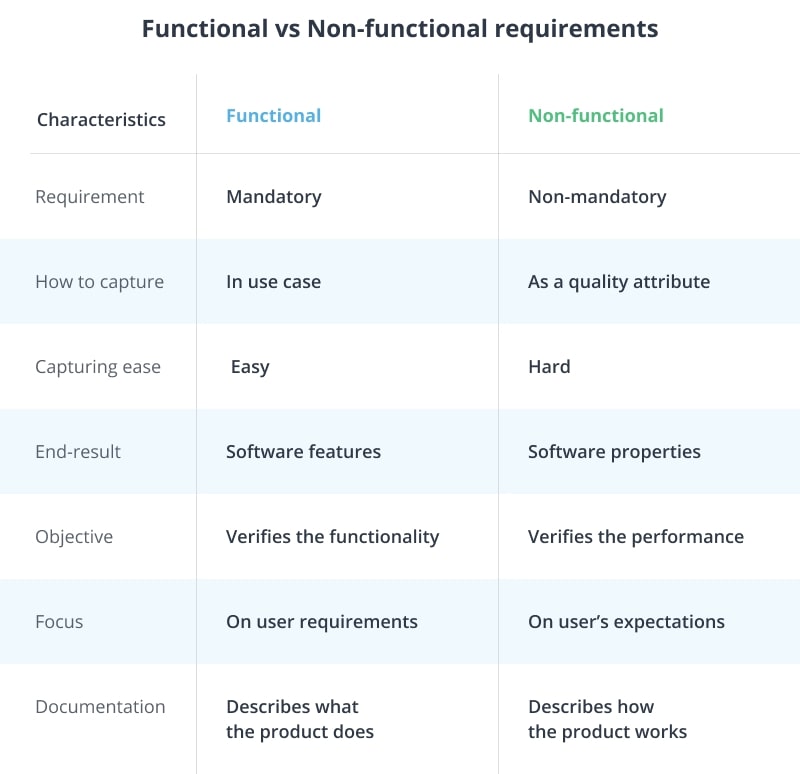


Comments